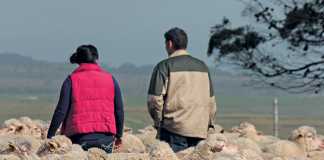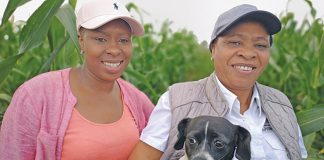
Photo: Jeandré van der Walt
In 1993, Andries van der Poll set a goal for himself: to farm for himself on his own piece of land. But the journey he embarked on to achieve his aim took him on many detours.
After obtaining his agricultural diploma at the Kromme Rhee Provincial Training Institute in Stellenbosch in 1992, he worked at a wine cellar, a desalination plant in Bitterfontein, and for his father.
In November 1993, Dirk Visser, a citrus farmer in Citrusdal, contacted Van der Poll about a job opportunity on his farm. “I was appointed foreman. Then, in 1994, he told me he was looking for a manager, and gave me a year to prove myself. He gave me a lot of exposure and an opportunity to engage in the development of new orchards,” he recalls.
For 20 years, he worked for Visser in a managerial position, after which he worked as a manager at Mouton Citrus in Citrusdal.
Getting the big break
In 2011, the Department of Rural Development and Land Reform bought Klipdrift, a farm between Riebeek-Kasteel and Gouda.
It lay fallow for almost three years. Then, in 2013, Van der Poll managed to secured a five- year lease on the property, finally realising his dream of farming for himself. In 2017, he went one step further by entering into a 30-year lease agreement with the department.
During the time the farm had lain fallow, weeds had taken over.
“When we got here, the ryegrass was almost knee-high. We bought 100 Red Angus cattle to graze on it. We also introduced sheep, as my plan was to focus on intensive sheep farming,” he recalls.
Introducing crops
Van der Poll soon realised that he could not make enough money out of sheep farming alone.
“In 2014, we planted a few hectares under triticale, oats and lupins. The following year, we started with wheat. It was a challenge, especially because of the drought, but it was also a great learning curve. We managed to harvest 6t/ ha.”
In 2018, he harvested 3,4t/ ha. He also established medics, which he alternates with wheat.
After losing grazing during the drought in 2015, he was forced to make a plan. “We have three centre pivots, and 42ha of the farm have water rights. We therefore decided to plant maize.”
Although many people discouraged him, he does not regret planting maize. He sells half of his crop and uses the rest as feed for his livestock component.
Today, he has 10ha under irrigated maize production and harvests about 8,8t/ ha. Last year, he also planted 10ha to lucerne, which yielded three cuts, which he baled for feed.
He practises conservation agriculture, which he learnt about during his years in Citrusdal.
Here he also discovered the value of correct timing: “All spraying and fertilisation should be done at the right time. Wheat should be planted and sprayed on time. The same goes for the animals; they should be dosed or sheared at the right time to avoid losses.”
He admits that achieving these goals can sometimes be difficult, especially during planting.
“I’m dependent on state funding for wheat. However, I often only hear in April whether the government will help me. If I don’t know by April if the government will assist, who else will help me at such short notice?”
He is nonetheless grateful for the help he receives from the state.
Livestock component
The livestock component on Klipdrift comprises more than 700 Dohne Merino ewes, 30 Red Angus cattle, and about 40 Boer goats.
Although Van der Poll is keen to buy additional land in the near future, he tries to utilise his current 450ha as productively as possible.
For example, he has made his sheep farming enterprise more intensive by dividing parts of the farm into small camps for monitoring and feeding. He would also like to install a feedlot in the near future.
Lambs are weaned at 100 days and moved to these smaller camps for further finishing. He sells most of his lambs at a live weight of between 42kg and 44kg at the Gouda auction for slaughter. His sheep are sheared twice a year.
A farmer, finish and klaar
Van der Poll has an aversion to the ‘emerging farmer’ label, as he does not consider himself one. He is, after all, a farmer with 20 years of agricultural knowledge and experience.
“I’m regarded as an emerging farmer because I’m dependent on the state for support, but many commercial farmers are dependent on banks. They are also not on their own. So we’re both in the same boat, except that so-called emerging farmers are not helped by banks, as we don’t have the necessary collateral.”
He admits he still depends to some extent on government funding and would struggle without it, but emphasises he does not sit and wait for a handout.
Future plans
Van der Poll’s main goal is to ensure that Klipdrift remains sustainable and profitable. He is also keen to expand his sheep flock, but needs more land for this, which he hopes to buy in the near future.
“I also want to reach a weaning percentage of 140% for my sheep. Currently, it’s between 112% and 118%. Having achieved this goal, I’ll be able to tackle other projects, such as getting bees to utilise the 3,5km eucalyptus ridge on the farm.”
He adds that he and his wife, Jackie, want to tap into the agritourism industry. They have restored an old rondavel and turned it into a guest house, and plan to establish a wedding venue.
Van der Poll says he would also like to train young people who are passionate about farming.
Phone Andries van der Poll on 082 876 8688, or email [email protected].












